Priscilla's
Bird Photography
Photos from personal trips AND trips with
Birds of Oregon and General Science, (BOGS)
in association with Eugene's Celeste Campbell Center
Priscilla Sokolowski
Eugene, OR



BOGS Finley Refuge,
Feb 12, 2015; Trip Report
On Feb 12, the OFFICIAL BOGS trip to Finley Wildlife Refuge took place.
It had originally been scheduled for Jan 29, but a car wreck on Hwy 99W that morning
led Steve to change plans. Most BOGS members thus went to Walterville on that day,
while ten others, found each other at Finley that day.
That trip report and slide show has already been posted.
This time the entire group all went to Finley as planned.
While re-grouping at the store on Bruce Rd and Hwy 99W, a pair of American Kestrels was noticed up in the top of a nearby tree. At least some of us assumed they were a male and female, though a question has subsequently been raised about that. Donna gave us an entertaining and creative "dialog" which she imagined taking place between the two birds. She had the female saying, "Look at me, look at me," among other things.

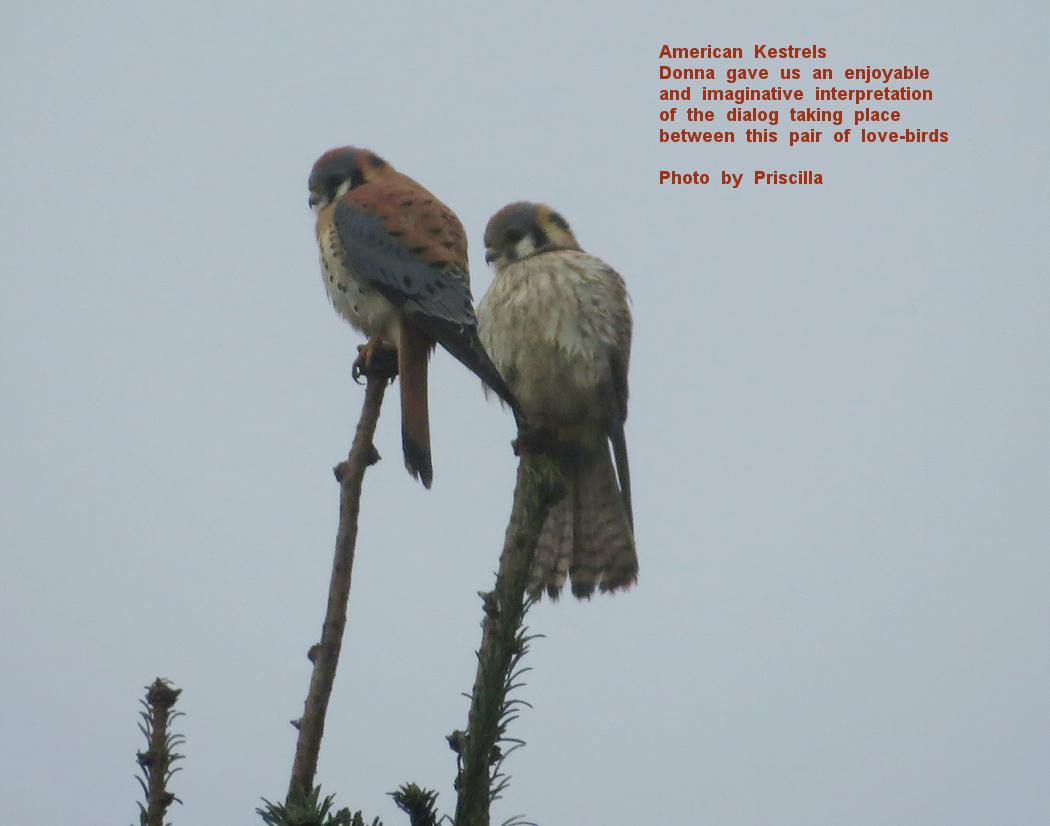
There were numerous Northern Pintails in ponds right alongside of the road. Donna and I noticed that the male's bill has light blue on both sides of it! Neither of us had ever seen that before.



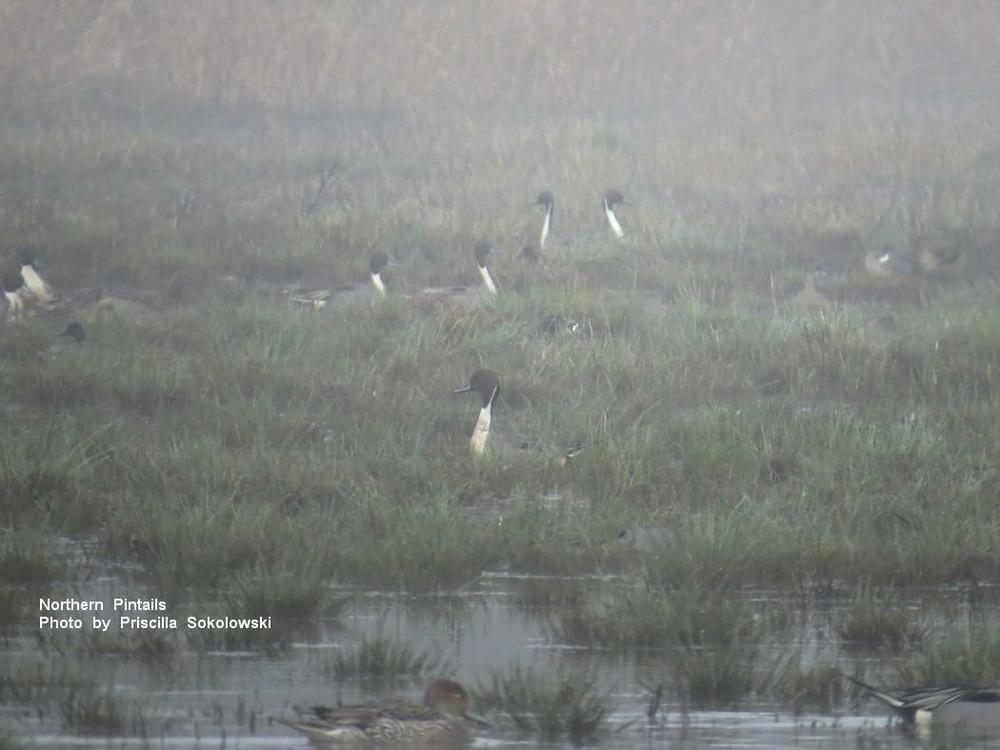
There were white Swans swimming single and groups of two and three in McFadden Marsh. Some were clearly Tundra/Whistling Swans, since they had the yellow lores (between the eye and bill). If they had all been calling, there would have been no question about whether any of them were Trumpeter Swans. Trumpeter Swans sound nothing at all like Tundra Swans.
But the visual differences between Tundra and Trumpeter Swans are subtle. I've never even read up on it until now because I'd had the impression one needs to be very close to them to look for the differences.
The necks of Trumpeters are said to be longer, and so are their bills. The shape of the black feathers between and above the eyes is more V-shaped in Trumpeters while more rounded in Tundras. The eye of the Tundra is supposed to be less enveloped in black compared to the Trumpeter. In the photos Don and I took, none of these field marks show up clearly enough to be convincing.
But there is one more. From a side view, the profile of the bill - the top edge - is curved in the Tundra Swan and straight in the Trumpeter. At least one Swan in one of our photos shows this. I created the following composite using one of Don's photos and one of mine.




Once again, Don captured a photo of a Ruby-crowned Kinglet. This little bird is well known to be extremely active; always flitting about, hardly ever stationary. I had to ask Don how he happened to catch it in focus when there are obviously branches right in front of the bird. He told me he had got it in focus when it was out in the open but it moved so he panned with it and pressed the shutter.


When we arrived at the South Prairie Overlook, an American Kestrel was stalking prey just to the west of the parking area. We saw probably this same bird two weeks ago in the same place. The Kestrel is such a beautiful bird.


The South Prairie Overlook hosts large flocks of Canada Geese through the Winter.

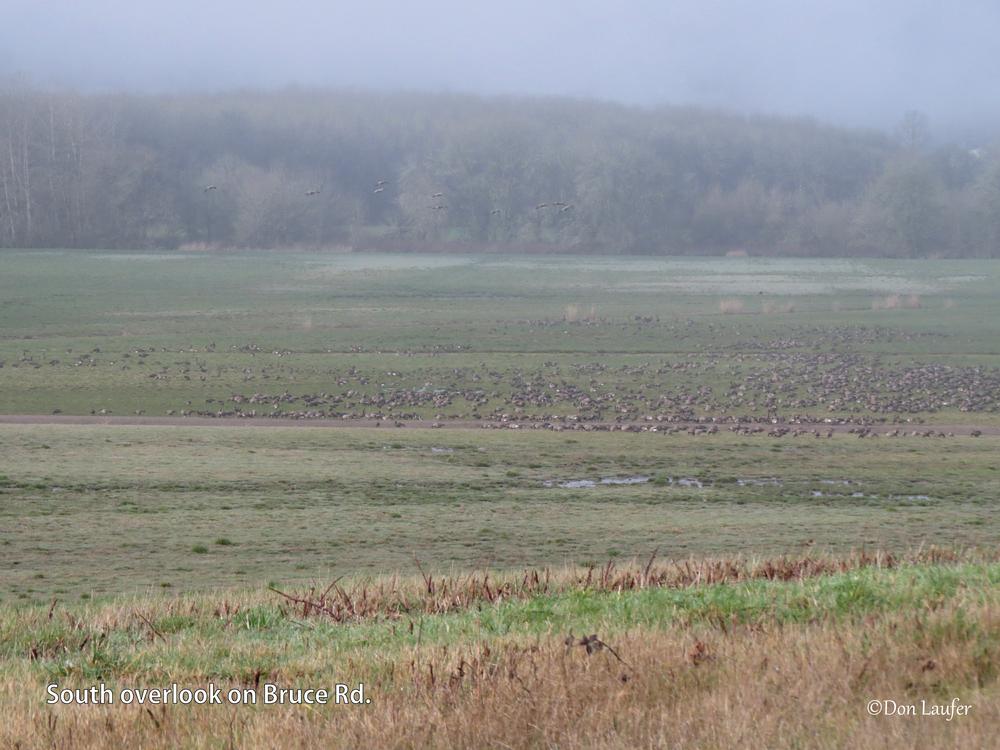
At the scrape pond, we had a lovely view of fog banks lifting from Pigeon Butte and many Rough-Legged Hawks way out in the distance sitting in the fields. Closer to us were some Northern Shovelers

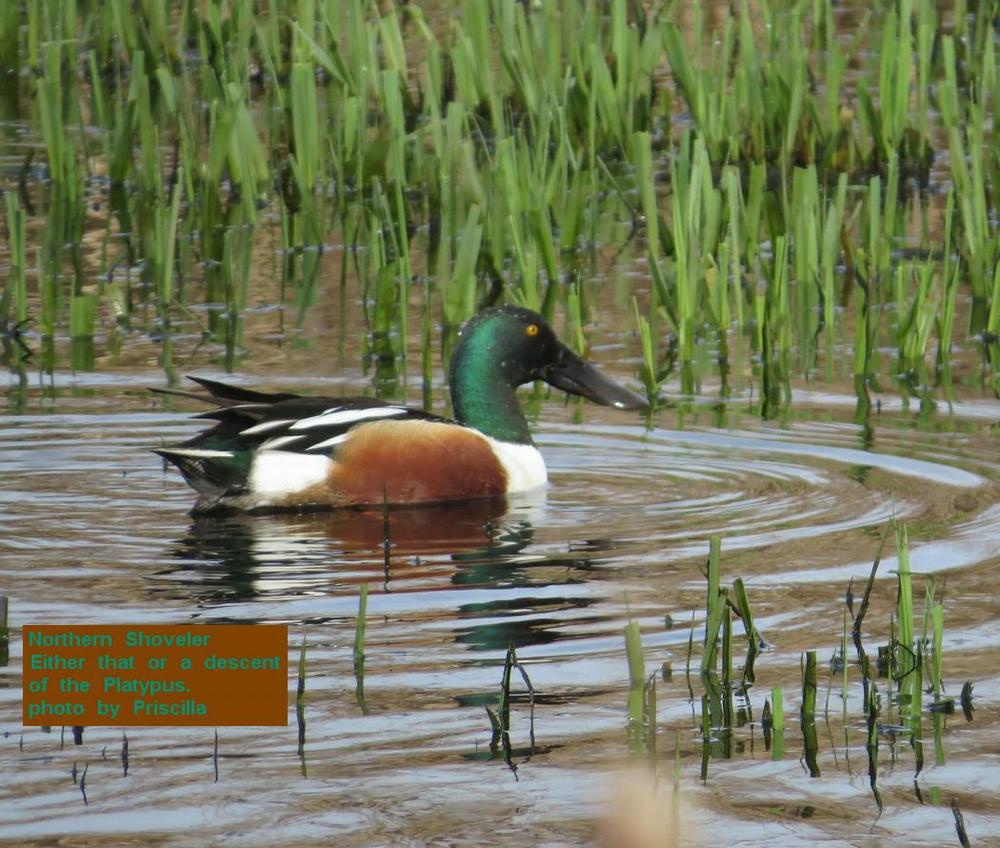




After leaving the scrape pond, we came across a beautiful Rough-legged Hawk in a tree right alongside the road. Both Don and I snapped photos of it when it took flight. (The entire sequence of shots is in the slideshow).

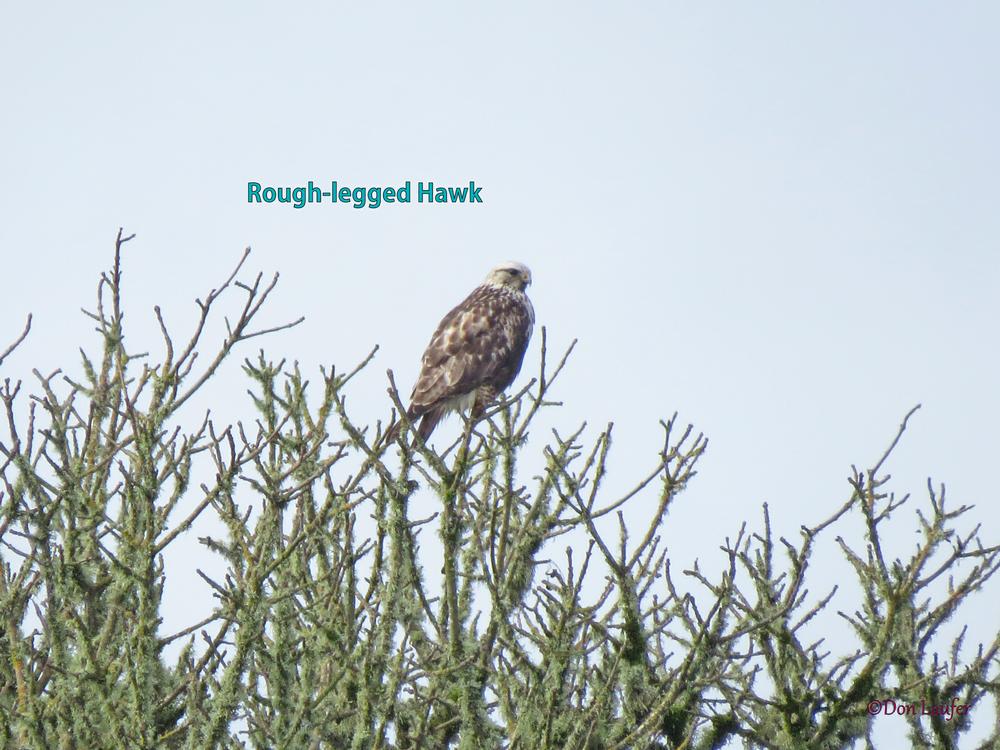

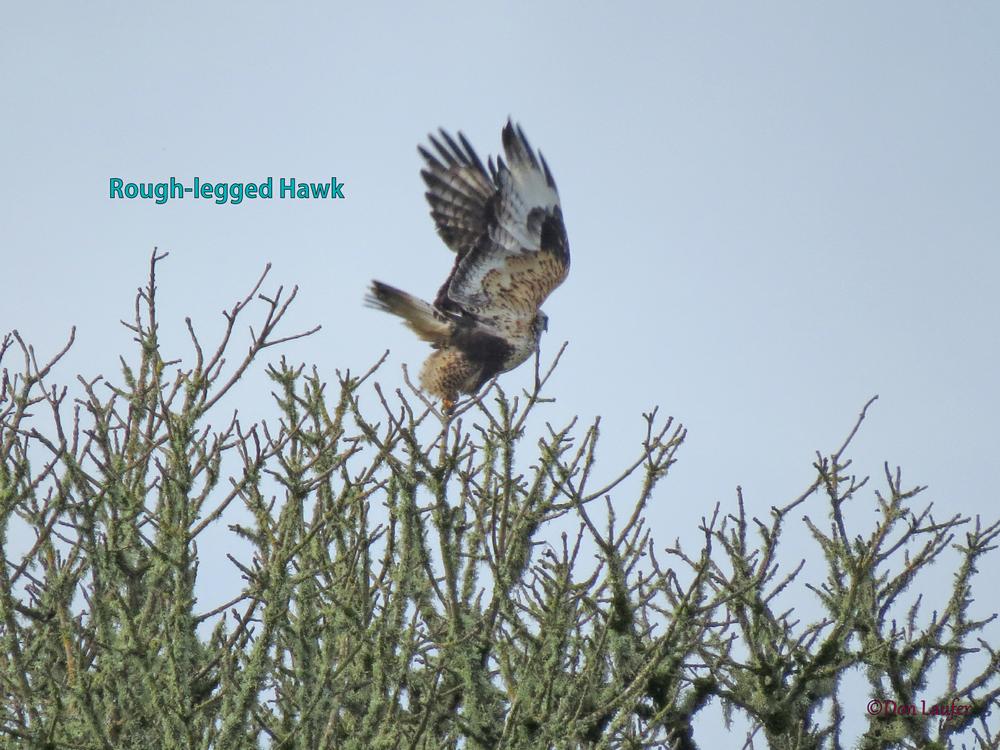

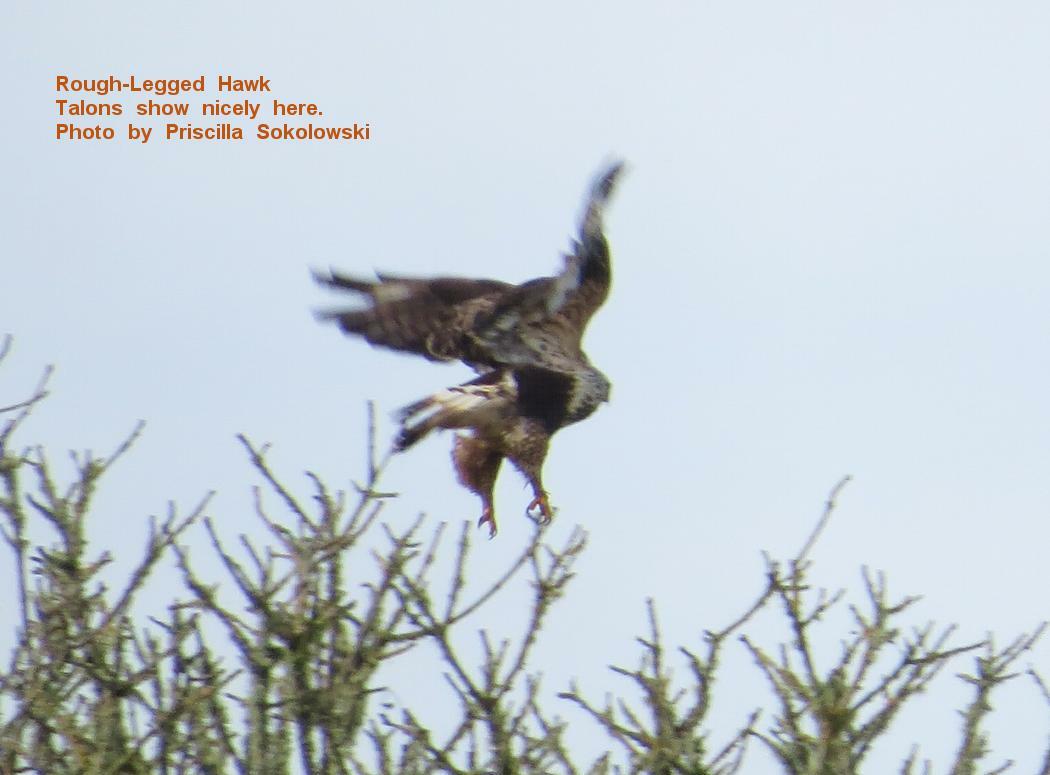
As we approached Headquarters, we came across a pair of Western Bluebirds. Everyone loves to see Bluebirds, and I am no exception. The blue color is so deep and rich, leaning slightly towards the violet. The female, while much less blue, has a prettiness of her own.



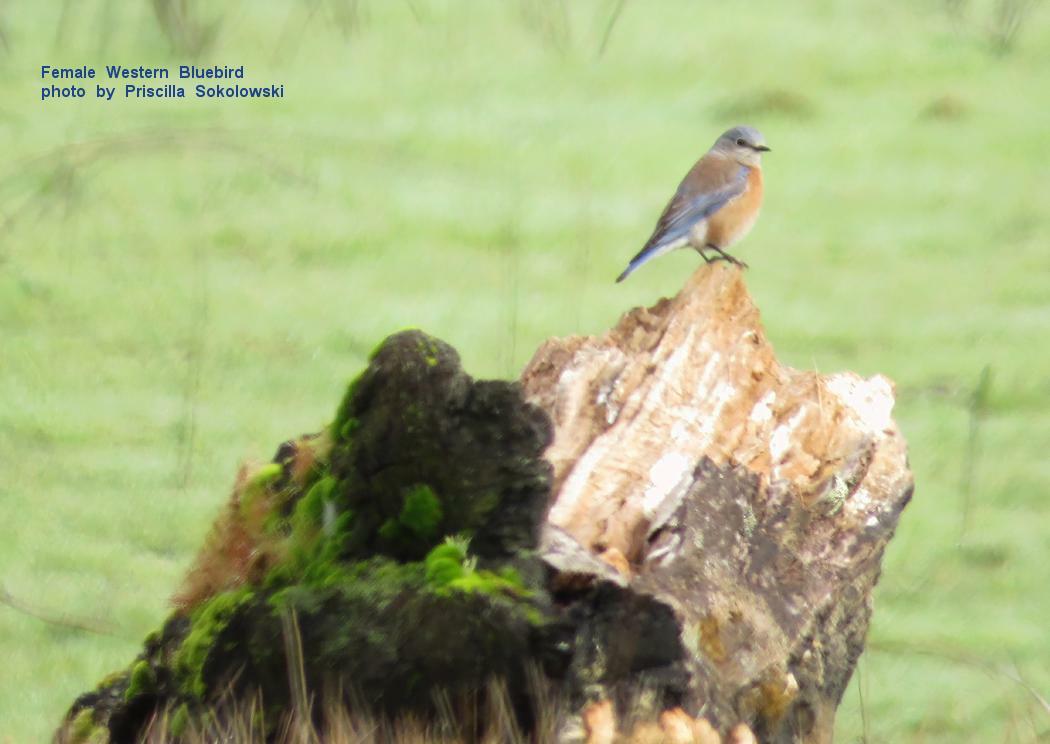
While we explored the ponds, feeders, fields and trees around Headquarters, Don put some effort into photographing Acorn Woodpeckers. I would have to say this photo is the prize shot of the day. (There are two more excellent photos of this bird in the slide show too).

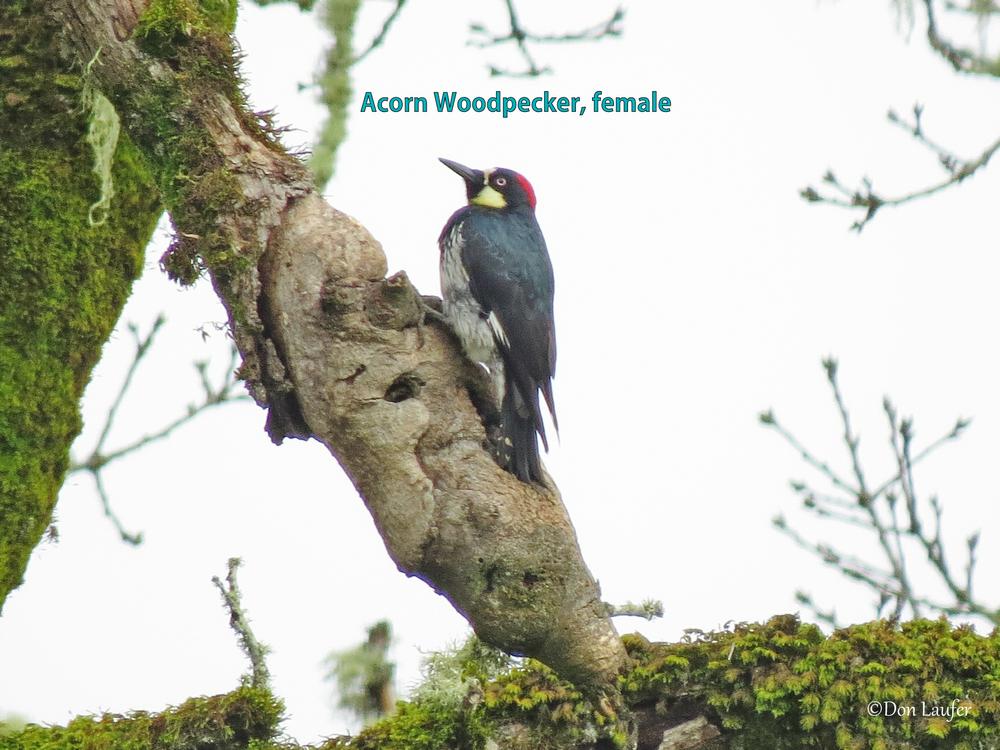
At the Prairie Overlook off Finley Rd (near the NE corner of the refuge), we heard Western Meadowlarks singing almost constantly, yet no one, despite many people making a prolonged effort with binoculars, no one could see a single Meadowlark!
Don captured a photograph of one of these birds; one which, it is possible no one had seen, including him.
(Now I would say THAT is a photographer!)
Don says Nola thought she might be seeing a Meadowlark in a tree and so he took a photo of the tree.
This just happened to be the moment the invisible bird took flight. Don only saw the bird in the photo when reviewing his pictures.
Perhaps Don could get work taking photographs of ghosts.


The last bird of the day was this one. It has a white spot on the top/back of its head. Such a bird was identified two days later (Feb 14) by birder Paul Rentz on OBOL, as a dark-morph Rough-legged Hawk.
We have seen this bird each year at this time. The first time we saw it, two years ago, we mis-took it for an immature Golden Eagle

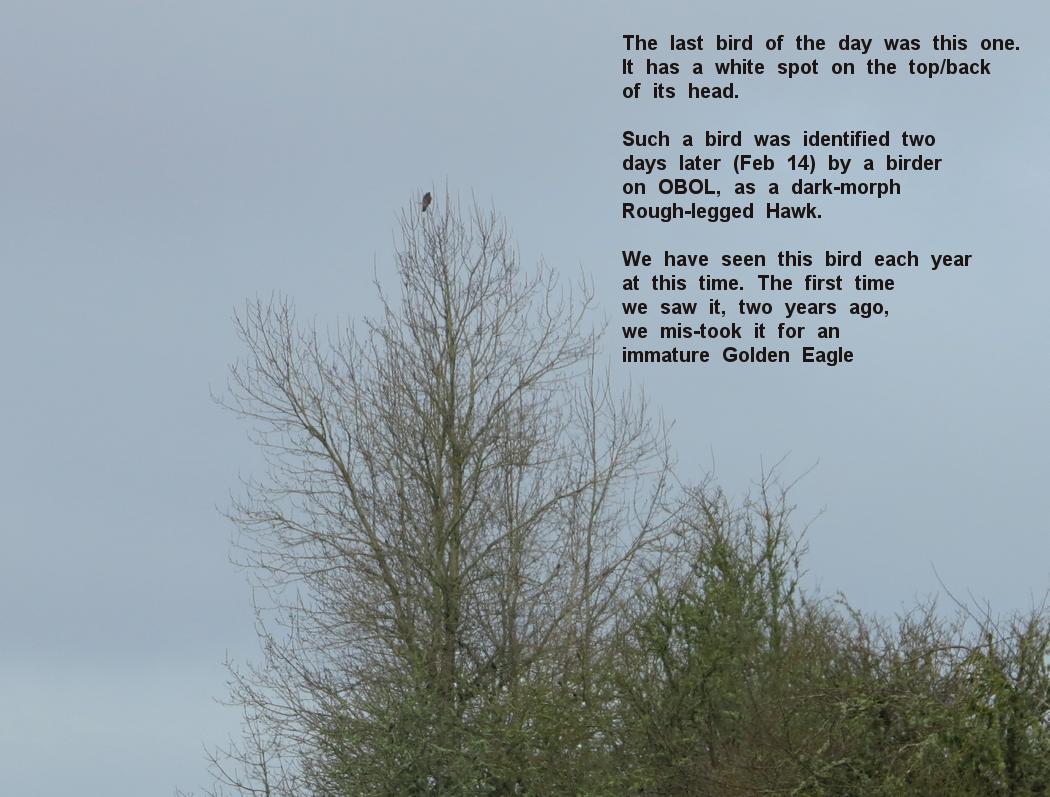

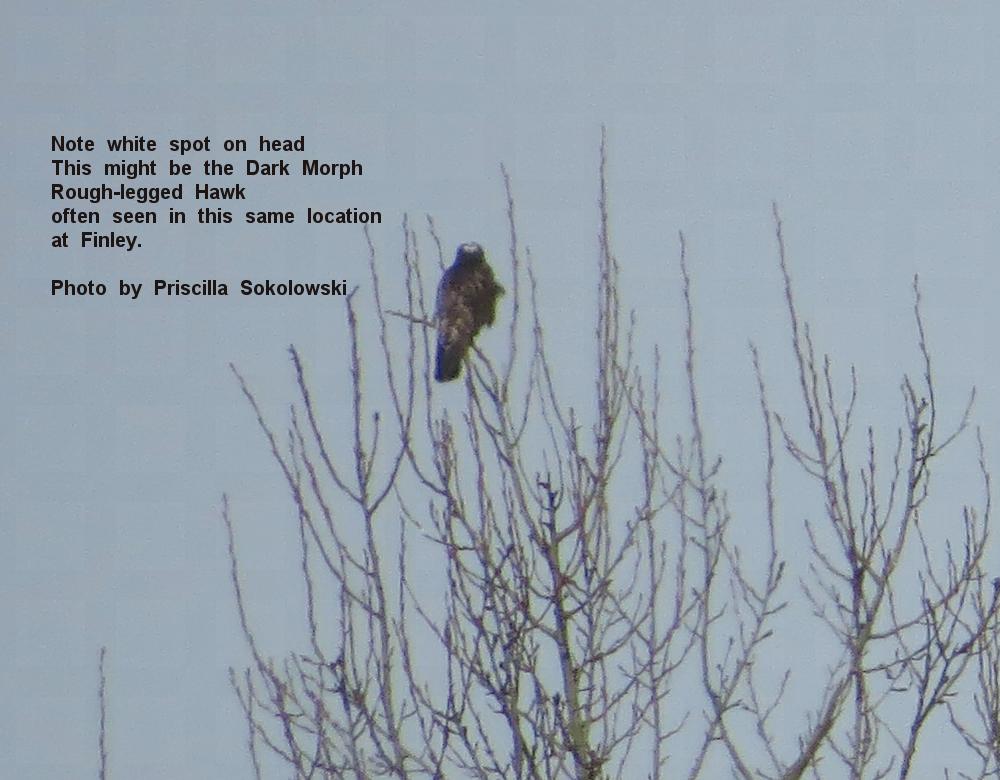
Bird list for bird walk at Finley National Wildlife Refuge, February 12, 2015, 9:30 a.m. to 12:30 a.m.
The weather was foggy, cool and dry, with light sun later in the morning.
--- compiled by Doris Wimber
- Double crested cormorant
- Great blue heron
- Great egret
- Tundra swan
- Trumpeter swan (an uncommon visitor in the valley, identified by lack of any yellow on beak,
shape of space above bill and between the eyes, and straighter beak profile). - Cackling goose
- Canada goose
- Mallard
- Green-winged teal
- American wigeon
- Northern pintail
- Northern shoveler
- Ring-necked duck
- Northern harrier
- Red-tailed hawk
- Rough-legged hawk
- American kestrel
- American coot
- Killdeer
- Gull
- Rock pigeon
- Tree swallow
- Acorn woodpecker
- Scrub jay
- American crow
- Black-capped chickadee
- Marsh wren (heard)
- Ruby-crowned kinglet
- Western bluebird
- American robin
- Yellow-rumped warbler
- Spotted towhee
- Golden-crowned sparrow
- Song sparrow
- Dark-eyed junco
- Western meadowlark
- Red-winged blackbird
- Purple finch
The photo slide-show for this trip can be found here:
http://priscillanhk.com/bogs-finley-refuge-2-12-15.html
Generally if you want to know what is happening next at BOGS, or want to see the latest photos/reports,
you can find these on my "updates" page:
http://priscillanhk.com/updates.html
Enjoy!
Priscilla